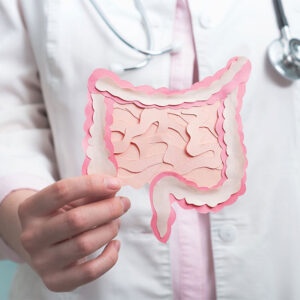
Are Bagels the New Cigarettes?
- New research has shocking results about the dangers of carbs
- The one time in life it’s less dangerous to be a smoker
- One way to make better carb decisions for your health.
Dear Reader,
Many people experience the devastating effects of lung cancer during their lifetimes — either by firsthand experience or by it touching the lives of loved ones.
In fact, lung cancer is so common it’s the second most diagnosed type of cancer in America for both women and men. And it’s also the leading cause of cancer deaths, with 150,000 U.S. deaths expected in 2016.1
Often, we hear of people afflicted with lung cancer who have never smoked cigarettes a day in their lives.
Last week, researchers at the MD Anderson Cancer Center at the University of Texas released a study that may shed some scientific light on these mysterious smoke-free lung cancer cases.
And what is shocking — it has everything to do with bagels and birthday cake, not cigarettes.
Today, I will share with you one easy way to help you combat these cancer causers.
But first, let’s sort out what the study found.
![]() The Glycemic Index : High Scores, High Risk
The Glycemic Index : High Scores, High Risk
The research, published in Cancer Epidemiology, Biomarkers & Prevention, a journal of the American Association for Cancer Research, shows that if you eat a diet of high-glycemic index (GI) foods, you are at a greater risk of developing lung cancer. And not just by a fraction — some folks experienced a 49 percent increased chance for lung cancer.1
The glycemic index indicates the quality of carbohydrates in a food and how quickly your blood sugar levels rise after eating it. The glycemic load measures the carbohydrate quantity.
Previous cancer research has investigated the link between glycemic index and glycemic load and the risk of numerous cancers.
This study furthered the research.
Lead author of the study and postdoctoral fellow at MD Anderson Stephanie Melkonian reports:
“Diets high in glycemic index result in higher levels of blood glucose and insulin, which promote perturbations in the insulin-like growth factors (IGFs).”
Let’s break this down further…
Insulin-like growth factors are different types of hormones that mostly stimulate growth but also have some ability to lower blood glucose levels. 2
The high levels of glucose found in in high-glycemic foods may cause IGF distress and could be what is leading to cancer cell growth.
Foods high on the glycemic index include those made with white flour and refined sugar, such as white bread as well as things like rice and breakfast cereals.
Since these foods are regular staples in many American homes, this may explain how some nonsmokers are now lung cancer cases.
The study examined the diet of approximately 1,950 patients with recent lung cancer diagnoses as well as 2,413 healthy people. All participants self-reported their diets, and then researchers evaluated their glycemic index accordingly.
The researchers found the end result. Xifeng Wu, senior author of the study and an epidemiology professor at MD Anderson, explains, “We observed a 49 percent increased risk of lung cancer among subjects with the highest daily GI compared to those with the lowest daily GI.”
What’s interesting is the glycemic load seemingly has no significant correlation with the risk of lung cancer. According to Wu, “This suggests that it is the average quality, instead of quantity, of carbohydrates consumed that may modulate lung cancer risk.”
Among those who smoke, lung cancer risk was raised by only 31 percent when consuming a high-glycemic index diet. This means the effects of the glycemic index are more apparent in the absence of a major risk factor like smoking.
“The results from this study suggest that, besides maintaining healthy lifestyles, such as avoiding tobacco, limiting alcohol consumption, and being physically active, reducing the consumption of foods and beverages with high glycemic index may serve as a means to lower the risk of lung cancer,” said Wu.
So there you have it, one easy way to help prevent cancer — avoid consuming foods high on the glycemic index.
Per the University of Sydney, carbs with a glycemic index of 55 or lower are more slowly digested, absorbed, and metabolized.
Foods like bagels and white bread have indexes between 70–95.
While it may be best to try to cut carbs out as much as possible, the University of Sydney also has a tool that can help you make more informed glycemic index dietary decisions.
You can access their online search engine, which provides glycemic index scores for many foods, here.
If you have any low-glycemic index diet tips, send them my way! nmoore@lfb.org
Live well,

Natalie Moore
Managing editor, Living Well Daily
Sources
[1] Dietary glycemic index linked to lung cancer risk in select populations
[2] Insulin-like growth factor (IGF)
[3] Is Green Squash Low Glycemic?
Written By Natalie Moore
Natalie Moore is a dedicated health researcher with a passion for finding healthy, natural, and science-based solutions. After a decade of direct healthcare experience in western and natural medicine, she was involved in public health research before joining Living Well Daily.
View More Free Articles
The Secret Ingredient to a Longer, Happier Life
Let’s face it. We’re all in need of an attitude adjustment from time to time. After all, when you turn on the news these days, the world can seem pretty dark. That is unless you make it a practice to look for the silver linings. In fact, Harvard researchers say when you do, something quite...
Do You REALLY Need All Those Skincare Products?
I often get questions about skincare products—and here’s what I’ve learned. In today’s beauty-obsessed world, it’s easy to fall into the trap of spending hundreds every month believing you need countless products to fight aging and achieve healthy, glowing skin. However, many dermatologists argue that LESS is MORE when it comes to skincare. Simplifying your...
“Ebb and Flow” Technique TRANSFORMS Senior Brain Health
You know by now that exercise is good for you. It keeps your heart healthy, your muscles strong, and your waistline trim. But what if I told you that a trendy “ebb and flow” workout technique—often associated with young fitness enthusiasts—could actually be a game-changer for us “oldsters” when it comes to brain health? And...
Mailbag: Slash Your Risk of Bone Fractures as You Age
“My doctor recently told me that I have osteoporosis. What can I do to reduce my risk of fractures and maintain strong bones as I age?” – Margaret Hi Margaret, Sorry to hear about your diagnosis. I’m sure it was a shock. Osteoporosis is a serious condition that affects millions of people, and it’s not...
Household Favorite EXPOSED as Cancer Risk?
We all want to believe that the products we use daily are safe. After all, if they weren’t, they wouldn’t be on store shelves, right? Well, I hate to break it to you, but sometimes, the truth is far more alarming than we’d like to admit. The World Health Organization (WHO) has just dropped a...
Hidden Heatwave Threat REVEALED
Heat waves can have serious consequences. After all, staying cool isn’t just a comfort issue. When the mercury soars, it threatens your health—especially when you’re a senior. There are various reasons for this, including chronic medical conditions and bodies that just don’t regulate temperature as well as they once did. But there’s another heat-linked threat...
The Hidden Threat Behind Your Achy Joints
Picture this… You’re trying to enjoy a leisurely stroll in the park, but each step sends a jolt of pain through your knee. Or maybe you’re attempting to open a stubborn jar lid, only to have your fingers refuse to cooperate, leaving you feeling frustrated and helpless. Perhaps you’re simply trying to get out of...
Parkinson's Signs You Can't Afford to Miss
Imagine waking up one day to find your body betraying you. Your hands tremble as you try to button your shirt. Your feet shuffle when you want to walk with purpose. Once strong and clear, your voice now barely reaches above a whisper. This is the reality for those living with Parkinson’s. But what if...
Do Protein Needs Drop with Age? The SURPRISING Answer
I had a patient ask me the other day if they needed as much protein now as when they were younger. After all, we aren’t quite as active as seniors compared to when we were spring chickens. It’s a good question. And the answer might surprise you… Remember when you could devour a whole pizza...
Follow Your “Gut Feeling” to Reduce Diabetes Risk
It seems like every day we learn something new about the incredible influence our gut has on our overall health. From mood to immunity, and even to how well we sleep, the community of microbes in our digestive tract is pulling the strings behind the scenes. So, it should come as no surprise that researchers...









